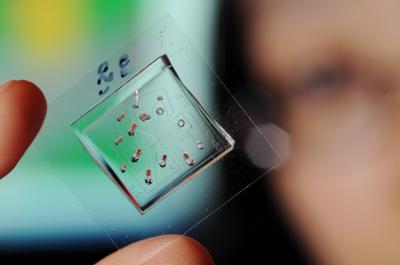Scientists have developed an automated system that uses advanced image processing and artificial intelligence for detecting subtle differences in nematodes used for biological research.
 Georgia Tech associate professor Hang Lu holds a microfluidic chip that is part of a system that uses artificial intelligence and cutting-edge image processing to automatically examine large number of nematodes used for genetic research. Credit: Georgia Tech Photo: Gary Meek
Georgia Tech associate professor Hang Lu holds a microfluidic chip that is part of a system that uses artificial intelligence and cutting-edge image processing to automatically examine large number of nematodes used for genetic research. Credit: Georgia Tech Photo: Gary Meek
They have examined the Caenorhabditis elegans nematode that possesses 302 neurons. These have well-defined synapses, though their thickness is lesser than that of a hair strand and length is lesser than a millimeter. These nematodes are commonly used in biological research.
Tiny multi-cellular animals are used in the study of genetic factors that underlie progression of illness and mechanisms of disease. Manual microscopic visual examination is normally performed. The latest method uses automated hardware and microfluidics that can identify subtle differences, such as genetic mutations, between one worm and another. It enables examination of thousands of worms within a short period of time.
The study was lead by Georgia Institute of Technology associate professor in the School of Chemical & Biomolecular Engineering, Hang Lu. The team is studying genes linked to the development of the human brain. They are conducting research on genes that affect development and formation of synapses in C. elegans worms. They created genomic mutations in thousands of worms and then studied the changes in the synapses. Fluorescent proteins were used for labeling synapses of specific neurons.
Incorrect developmental patterns due to genetic mutations are identified by observing the differences between normal or "wild type" worms and the mutants. Earlier, the researchers had developed a "worm sorter" for increasing the speed of examining the worms. The present study optimized this method and a camera was used to record the images of individual worms in three dimensions. The system compared the worms which were then sorted. This automated technique can be used in other research areas that depend on detecting the difference in brightness, size or shape.
The National Science Foundation, National Institutes of Health and the Alfred P. Sloan Foundation have supported the study, which has been published in the journal Nature Methods.
Source: http://www.gatech.edu/